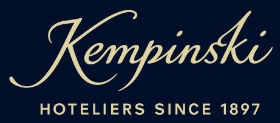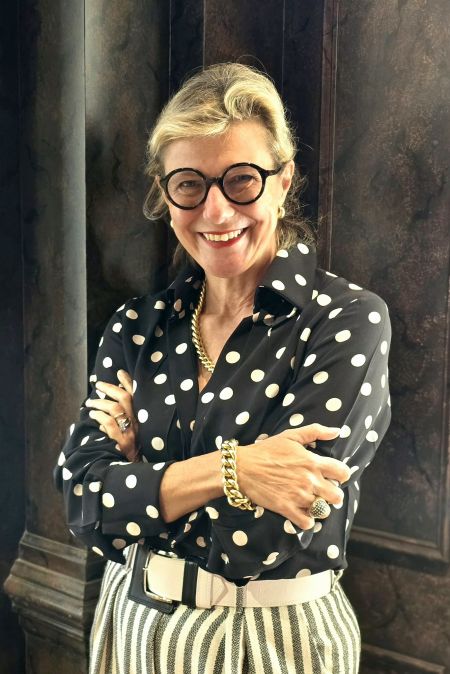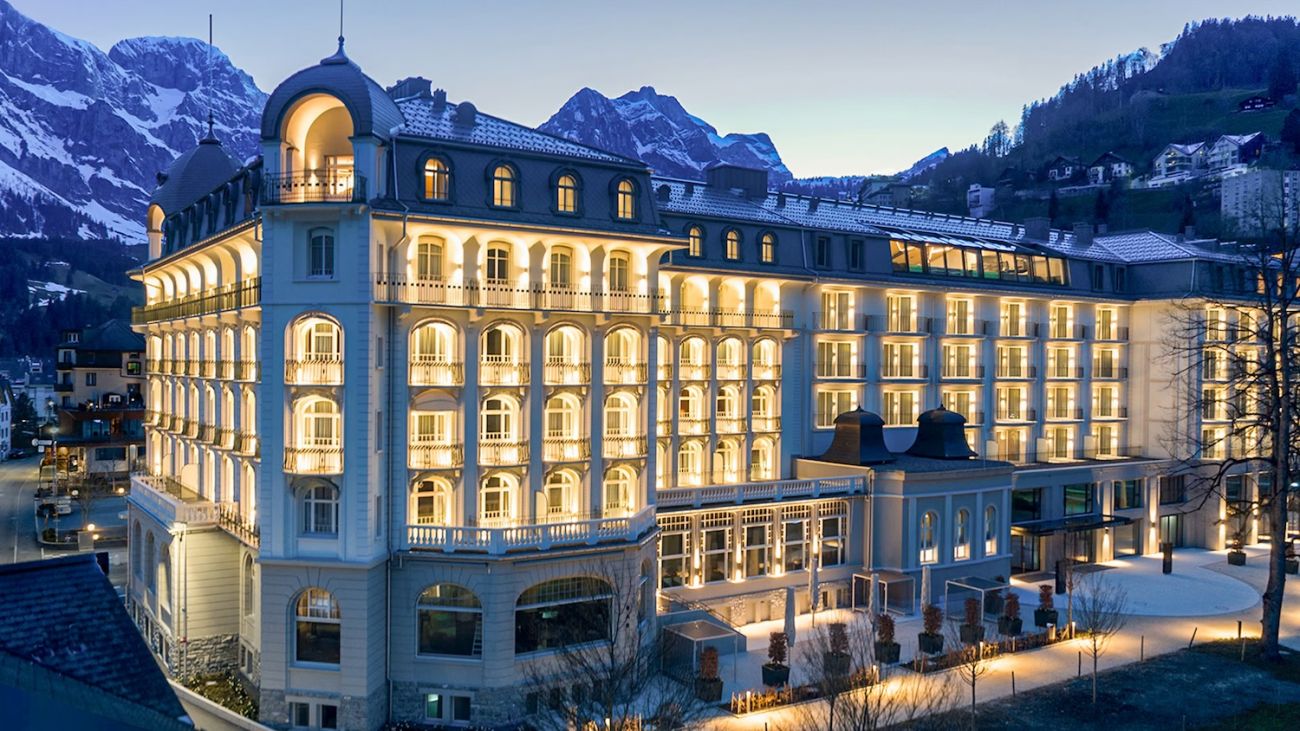 |
LEADERS - BARBARA MUCKERMANN, CEO KEMPINSKI GROUP: "NOBODY SHOULD CHANGE A BRAND WITH 127 YEARS OF HISTORY"
In a tearoom during Virtuoso Travel Week in Vegas, we meet with Barbara Muckermann, recently appointed CEO of Kempinski Group, to discuss her vision before she submits her plans to the Board. |
Category: Worldwide - Interviews and portraits
- Interviews - Industry leaders
Interview made by Sonia Taourghi on Friday 30 August 2024
 Barbara Muckermann, the new CEO Kempinski Group, during Virtuoso Travel Week in August 2024
Photo credit © Sonia Taourghi / Journal des Palaces
"Over the years, Kempinski hotels have been favoured by heads of state, celebrities, and the scene of many historical moments", reminds Muckermann. "History and life happen at Kempinski: everyone has a story to tell about their time at one of our hotels. And it's time for Kempinski to remind everyone why the European luxury heritage is so strong and unforgettable."
Today, the brand operates 82 hotels in 36 countries, with 34 hotels in the pipeline. As she prepares her plan to present to the Board, the new CEO, based in Dubai, is currently assessing the situation, meeting stakeholders, gathering intelligence and building a team. "As the second-largest airport in the world, Dubai is very attractive for executives and of course, as we will need to build a team, we need to be located in a good place. We have a beautiful office in Geneva, but the city can be very expensive for many people."
Before she gets to tell Kempinski's story to the world, Barbara Muckermann, pragmatic and humble, shares a piece of hers, and how she's settling into her new role as she intends to bring back the glorious days of the iconic German brand. She might not have all the answers yet but her passion and clear vision for the brand transpire in her every word.Journal des Palaces: What brought you to luxury travel originally? Barbara Muckermann: I've had a travel vibe from my father. He was a journalist, and he lived in many different places in the world, but his big passion was always travelling. So, for me, there's always been this incredible interest in discovering the world.
When you are starting your career, working in travel is one of the best ways to discover the world. In 2000, I was lucky enough to be hired at Silversea as Vice President of Corporate Communication. From there, I grew to marketing, and then to Head of sales. That's really how my career started, and where I approached luxury for the first time. From there, I moved to Loro Piana, where I learned about European luxury, in Milan.
When I later joined Norwegian Cruise Line, I had to reposition them with the launch of the first luxury concept within a cruise ship, so that was a product development project. It was successful as The Haven was the first space of its kind, and then the concept was followed by other brands.
MSC was of course a large contemporary brand with an amazing scope of 48 offices around the world, and that was a big job.
When Silversea called me back in 2016, I didn't anticipate it would be sold to Royal Caribbean in 2018, leading me to become its President. This was amazing because I left Silversea as the largest player in the luxury and expedition markets.Did you have a desire to work for a hotel company, or was it a chance opportunity?After all these experiences, heading Kempinski came as a great opportunity and transitioning to the hotel industry was natural because ships are hotels that move.
But in a certain way, it's a much more complicated business; particularly if you have ships going to Antarctica, to the Galápagos, you're self-sufficient; I was managing hospitality, procurement, customs and ports… So if you think about the business, hotels are, in a certain sense, simpler than ships. Still, Kempinski operates 82 hotels. So that's very interesting and a real chance.
Also, I've always worked with great brands, but they were all quite modern brands, even Loro Piana. Kempinski is 127 years old. As a brander and product builder, I'm very excited about the opportunity of a heritage brand. What do you think are the key learnings from cruises that can apply to hotels, from people management and customer service perspectives?For me, the biggest learning is that nobody shows up on a cruise unless they're booked. So, you feel the shift months before the departure. So now, the idea that people show up at the hotel last minute is making me very nervous!
Timing is something I need to grasp. I think hotels can learn a lot from the discipline of cruising. We are product owners in cruising, and having an owner's perspective can give a lot of added value to a management company. So that's the perspective that I'm working with the operations team: it creates value for the owners, it creates a stronger product…
Also, the product design perspective and product standard are extended: in cruise ships, you need to design every single piece. So I've learned a lot on that end.
Today the role of any travel company is to sell experiences, it's not about the accommodation any more; the accommodation is a container, it's where it starts from, but it's all about the experience.
With my experience in the cruise industry, I think there's a big innovation to be brought to the hotel industry. What was the appeal of joining Kempinski? Its potential. Kempinski is the brand that's punching below. That's the biggest opportunity for me.
If you're thinking about it, Peninsula and Mandarin Oriental are Asian, Rosewood is American, now owned by a Chinese company. Four Seasons is Canadian. Kempinski is the only European heritage brand. And if you're asking anybody, where is luxury coming from? From Europe.
A lot of service elements are coming from Asia, but a good friend of mine told me once "Barbara, remember there's a good reason why the only luxury American brand, Tiffany, is owned by Frenchmen".
I would say that the global narrative around luxuries is that Europeans know how to do luxury. If you take the only luxury European heritage hotel brand, and you're thinking about where we are today. It's not where we could be. That's the real potential that attracted me to the brand. What sets Kempinski apart in this multifaceted luxury industry?The strength of service that can be made. While Silversea has always been known as one of the best services of the sea, Kempinski is probably even better and on land it's harder. Remember at sea your personnel stay four to eight months, they don't go home so they're completely focused on service.
So, it's amazing what has been achieved with the team at Kempinski. Service is one of those things that I was incredibly impressed with, and it confirmed everything I had heard about the quality of the teams.
The F&B is also great, even though we might be missing the "sexiness" of the narration around certain restaurants. Ultimately the backbone is amazing as there is an incredible territory of gastronomy in the brand.
It's easier to tell the story than to teach people how to cook. That's where I come in.What's your vision for Kempinski?At the origin, I'm a marketer, and brand builder, but I always interpreted this role as the custodian of the Kempinski brand: understand it, take what is already there and just make it shine and put it in order. It would be a huge mistake to change what's there. Especially as the Head of the brand: you need to keep innovating and being on the forefront, but you can only build on the past. Nobody should change a brand with 127 years of history.
Every marketer should refrain from touching a heritage site. It's our role to preserve, package and bring it to the next level. It's just a question of discovery, engagement, and moving on.
Otherwise, it's a different job; you're building your brand. When I used to teach luxury branding, I was always asking the audience "How many years do you need to build a hundred-year-old heritage brand, and the answer is a hundred years". Even if I'm lucky enough to stay at Kempinski for five to ten years - eight years being the least you need to develop the brand to the next level - that's a blip in the history of the brand. My role is going to be not to mess it up.
I told the shareholder, that 2024 is about strategy and rebuilding from the foundations.How will you execute your vision?The first phase will be refocusing on luxury, and maybe de-flagging some hotels if they're not representing the future.
Then, I think 2025 will be the year of the relaunch, and we'll become smaller before we become bigger. Some properties made sense in the historical moment when they became part of the portfolio, but they might not any more. We have decisions to make, and we need to make them.
Strategy is also about saying no, it's not about always saying yes. They affectionately call me Number Six in the office because I'm the sixth CEO of the brand in modern times. There has been a lot of instability which has started at the shareholder level, and of course, with the changing of one shareholder, there have been changes at the management level.
Now, for the first time in recent history, there's a stable owner in control. We have a very clear board direction, they chose the good and the bad, and they chose me to lead the brand.
This moment of stability is a perfect opportunity to refocus and rebuild to bring Kempinski to its full potential.What characterise your leadership?My approach to leadership is to empower the team and become redundant. I always consider myself successful if you leave and nothing happens. I left Silversea after eight years, and the team is incredibly strong.
If the strategy is strong, the brand is strong. And the brand will be incredibly successful.
Of course, at the beginning, you need to be very hands-on, for me, understanding, and learning. Getting in the trenches with the brand is fundamental.How do you plan on building on the teams' strengths? There are two clear things in Kempinski's DNA: the hotelier blood and crafting beautiful experiences.
The training and the culture are extremely strong. You really recognise the culture of luxury hospitality in every team member.
There is an incredible passion for the brand, natural hospitality and service instincts in the leadership. It's just great being in an office where everybody's well-dressed, you speak four or five different languages around the floors, and everyone shares the same culture and sense of pride. I've experienced that at other luxury brands, and that was the case at Loro Piana in Milan.
Part of that hotelier blood is that anybody you meet in the Kempinski team will have that immediate response to a piece of paper on the floor, to move the chair for you, to open a door. You can’t make that up. So that for me is an incredible strength of this brand. And it's one of those propelling strengths that if you can just empower a little will be incredibly powerful.
Crafting beautiful performances is the phrase that I have found many times in the literature of the brand and that is the point of view on hospitality. Some brands welcome you into their home, and some brands create destinations like the W hotels or Ian Schrager hotels which you want to look at because of the quirkiness of the design. Kempinski is about the collection of individuals. The hotels themselves are very different, so instead of having the protective shell, you want the hotel to be immersed in the destination. And this is an advantage for Kempinski. I think we will have to strengthen our product view: we're doing service, but I think we can do more on the product side.
Kempinski is about putting up the best possible show for you, which is I think a very interesting approach that I have not met in hospitality: at the end of the day, particularly in luxury, in retail for example, it's all about putting up a show. The difference between luxury retail and luxury hotels is that in luxury retail you meet the brand maybe for 45 minutes. It's easy to keep that performance going for 45 minutes. In hotels, we keep the guests for days. So that's where I think the DNA of really crafting the brand performance is in use.With an original plan to extend the portfolio in the coming years, how will you maintain the vision?At this time, we need to find a balance between refocusing and redefining what is the luxury of Kempinski.
But if you forget the Kempinski brand for one second, there are two types of luxury, and luxury is always a cultural expression.
If you are in a city, you know a palace has its own heritage, so whatever the management company is it's always going to be about enhancing the palace. And luxury will always need to be ingrained with the history of the palace because you have the cultural significance of the place.
If you build a hotel in a new city in the Middle East, it's a new destination. That's when a management hotel can go crazy and define a new luxury. That's where you're using the heritage brand and your DNA to sort of create a new version of that luxury. Any luxury brand will understand that the luxury of a palace, it's about the brand. It's a brand within a brand.
Looking back 20 to 30 years ago, particularly the American affluent guests, wanted to go around the world and find the exact same thing. It was about finding a small American island in a foreign, scary country. What I know from this industry is that the affluent traveller today wants to be immersed in the destination. At the same time, we can create the opportunity for the traveller to journey the world, enter a Kempinski lobby, and immediately feel that "Kempinskiness" while allowing the beautiful authenticity of the place to shine. I don't know what that balance looks like yet, but that's one of the refocusing strategic goals that we're going to do in the next months.
Storytelling is what we're missing at the brand level, because there are a lot of stories, and nobody knows about them. Imagine how many stories we have from our 127 years of history!
 Kempinski Palace Engelberg in Switzerland
Photo credit © Kempinski Hotels & Resorts
 The Capitol Kempinski Hotel Singapore
Photo credit © Kempinski Hotels & Resorts
|
|







